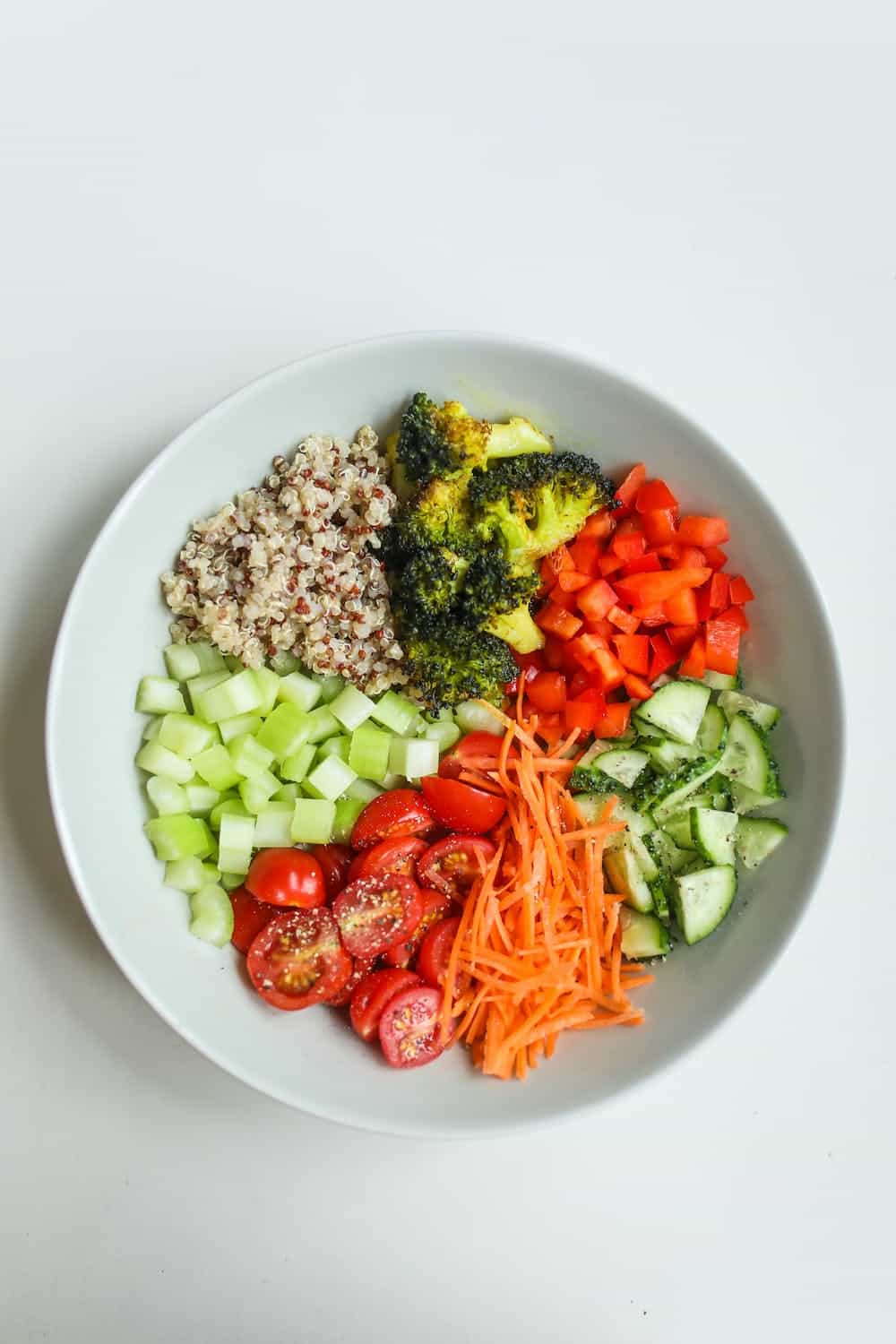6 Ideal Diets For Women – The Best Diet Ever
Losing weight is always tiresome. In most case we try harder but the outcome could not meet our expectation level. However, to get the best outcome from your weight loss journey , it is important to have proper exercise with ideal diet. It will help you to reach your fitness goal faster than your expectations. Read this article. You will get here 6 Ideal Diets For Women – The Best Diet Ever 2023.The ideal diets are
- Flexitarian Diet
- Updated Atkins
- The Belly Fat Diet
- Abs for Women
- 3 Week Diet
- Venus Factor
The Flexitarian Diet
The Flexitarian Diet, also known as “flexible vegetarianism,” is a dietary approach that emphasizes plant-based foods while allowing for occasional consumption of meat and other animal products. This diet has gained popularity in recent years as people seek to improve their health and reduce their environmental impact.
Flexitarianism is not a strict vegetarian or vegan diet, rather a flexible approach to eating that allows for more variety and a wider range of food choices. The focus is on whole, unprocessed foods, with an emphasis on fruits, vegetables, whole grains, legumes, and plant-based proteins.
Flexitarians typically consume meat or animal products a few times a week, rather than at every meal. When they do consume animal products, they often choose lean sources of protein such as chicken, fish, or low-fat dairy products. They may also opt for plant-based meat alternatives such as tofu, tempeh, or seitan.
 One of the primary benefits of the Flexitarian Diet is that it can help individuals improve their overall health by increasing their intake of nutrient-dense foods. Research has shown that diets high in plant-based foods can help reduce the risk of chronic diseases such as heart disease, diabetes, and cancer.
One of the primary benefits of the Flexitarian Diet is that it can help individuals improve their overall health by increasing their intake of nutrient-dense foods. Research has shown that diets high in plant-based foods can help reduce the risk of chronic diseases such as heart disease, diabetes, and cancer.
In addition to health benefits, the Flexitarian Diet can also have a positive impact on the environment. Meat production is a significant contributor to greenhouse gas emissions and deforestation, and reducing meat consumption can help reduce our environmental footprint.
Things to consider before adopting Flexitarian Diet
If you’re interested in adopting a Flexitarian Diet, there are a few things to keep in mind. First, focus on incorporating more plant-based foods into your diet, rather than simply reducing your meat intake. Aim for at least five servings of fruits and vegetables per day, and include whole grains, legumes, and nuts in your meals.
 Second, be mindful of the types and amounts of meat and animal products you consume. Choose lean sources of protein, and limit your intake of red and processed meats. Consider meatless meals or plant-based alternatives a few times a week.
Second, be mindful of the types and amounts of meat and animal products you consume. Choose lean sources of protein, and limit your intake of red and processed meats. Consider meatless meals or plant-based alternatives a few times a week.
Finally, remember that the Flexitarian Diet is a flexible approach to eating, and there is no one-size-fits-all approach. Experiment with different plant-based foods and recipes to find what works best for you.
Finally, the Flexitarian Diet offers a flexible approach to eating that can help improve your health and reduce your environmental impact. By focusing on whole, plant-based foods and incorporating meat and animal products in moderation, you can enjoy a varied and nutritious diet that meets your individual needs and preferences.
The Atkins Diet
The Atkins Diet is a low-carbohydrate diet that has been popular for decades. It was originally developed by Dr. Robert Atkins in the 1970s, and it quickly gained popularity as a weight loss plan. The diet has undergone several updates over the years, and the most recent version is known as the Updated Atkins Diet.
The Updated Atkins Diet is similar to the original Atkins Diet in that it is a low-carbohydrate, high-fat diet. However, it is more flexible and allows for a greater variety of foods. It also places a greater emphasis on healthy fats and encourages the consumption of vegetables and whole foods.
The basic principles of the Updated Atkins Diet are as follows:
Limit carbohydrates:
The diet limits carbohydrates to 20-30 grams per day during the initial phase, which typically lasts two weeks. After the initial phase, carbohydrates can be gradually increased, but they should still be limited to around 50 grams per day.
Eat protein:
The diet encourages the consumption of protein, which can come from meat, fish, poultry, eggs, and cheese.
Focus on healthy fats:
The diet emphasizes the consumption of healthy fats, such as those found in nuts, seeds, avocados, and olive oil.
Include vegetables:
The diet allows for the consumption of non-starchy vegetables, such as leafy greens, broccoli, and cauliflower.
Avoid processed foods:
The diet encourages the consumption of whole, unprocessed foods and discourages the consumption of processed foods, which often contain added sugars and unhealthy fats.
 The Updated Atkins Diet has been shown to be effective for weight loss and for improving certain health conditions, such as diabetes and metabolic syndrome. However, like any diet, it may not be suitable for everyone. It is important to speak with a healthcare professional before starting any new diet or exercise program.
The Updated Atkins Diet has been shown to be effective for weight loss and for improving certain health conditions, such as diabetes and metabolic syndrome. However, like any diet, it may not be suitable for everyone. It is important to speak with a healthcare professional before starting any new diet or exercise program.
One potential downside of the Updated Atkins Diet is that it can be difficult to follow long-term. The initial phase, which is the most restrictive, can be particularly challenging for some people. Additionally, the diet may not provide enough fiber or other essential nutrients, so it is important to ensure that you are getting a balanced diet.
Remember, the Updated Atkins Diet is a low-carbohydrate, high-fat diet that emphasizes healthy fats, protein, and vegetables. It has been shown to be effective for weight loss and for improving certain health conditions, but it may not be suitable for everyone. If you are considering the Updated Atkins Diet, it is important to speak with a healthcare professional to determine whether it is the right choice for you.
The Belly Fat Diet
Belly fat is a common concern for many people, and it is also a risk factor for several health conditions, including heart disease and type 2 diabetes. The Belly Fat Diet is a diet plan designed to help reduce belly fat and improve overall health.
The Belly Fat Diet is not a specific diet plan but rather a set of guidelines that focus on reducing calorie intake, increasing physical activity, and making healthy food choices. Here are some key principles of the Belly Fat Diet:
Reduce calorie intake:
The Belly Fat Diet recommends reducing calorie intake by 500-1000 calories per day, depending on your current weight and activity level. This can be achieved by reducing portion sizes, cutting back on high-calorie foods, and making healthier food choices.
Choose healthy fats:
The diet emphasizes the consumption of healthy fats, such as those found in nuts, seeds, avocado, and fatty fish. These fats are believed to help reduce inflammation and improve heart health.
Eat fiber-rich foods:
The Belly Fat Diet encourages the consumption of fiber-rich foods, such as fruits, vegetables, whole grains, and legumes. These foods can help keep you feeling full and reduce calorie intake.
Limit added sugars:
The diet recommends limiting the consumption of added sugars, which are found in many processed foods and beverages. These sugars can contribute to weight gain and other health issues.
Exercise regularly:
The Belly Fat Diet emphasizes the importance of regular physical activity, including both cardiovascular exercise and strength training. Exercise can help burn calories, reduce belly fat, and improve overall health.
Manage stress:
Stress can contribute to weight gain and belly fat, so the Belly Fat Diet recommends stress-reducing activities such as yoga, meditation, or deep breathing exercises.
While the Belly Fat Diet can be effective for reducing belly fat and improving overall health, it is important to remember that there is no magic solution for weight loss. Sustainable weight loss requires a long-term commitment to healthy eating and regular exercise.
Additionally, it is important to speak with a healthcare professional before starting any new diet or exercise program. This is especially important if you have any underlying health conditions or are taking any medications.
Abs for Women Diet
This diet is also designed to help a woman flatten her stomach and get into shape. There are exercise moves as a part of this diet system that target problem areas such as the stomach, thighs, and the butt. These exercise moves use moves from yoga and Pilates. A woman does not have to go to the gym in order to follow this diet. She will learn what foods will help her body burn fat and what foods that should not be consumed during this diet.
3 Week Diet
This diet is popular and will help the body burn stored fat. The diet will teach a woman what to eat for weight loss and how much of each food group they should be consuming daily. They will also learn the best times of the day to eat for weight loss. Within three weeks a woman can expect to lose the between 12 and 23 pounds. The diet also has exercises that are easy to do and will only take 15 minutes a day to perform. This is great for a busy woman. There are special diets for different body types so a woman can find the plan that is ideal for her body.
Venus Factor
This diet is designed to work with the female hormones to help the female body lose weight and burn fat that is stored. This diet will increase metabolism and foods that will help a woman lose weight. There are a number of exercises that can help burn fat in a woman’s problem areas.
These are some of the best diets that are designed to help woman lose weight. These diets were designed with the needs of the female body and will target areas that a woman has fat accumulation. These diets will help a woman get rid of unwanted fat and look her best. Besides having diet you can try swimming, jogging or cardio exercise for weight loss.



